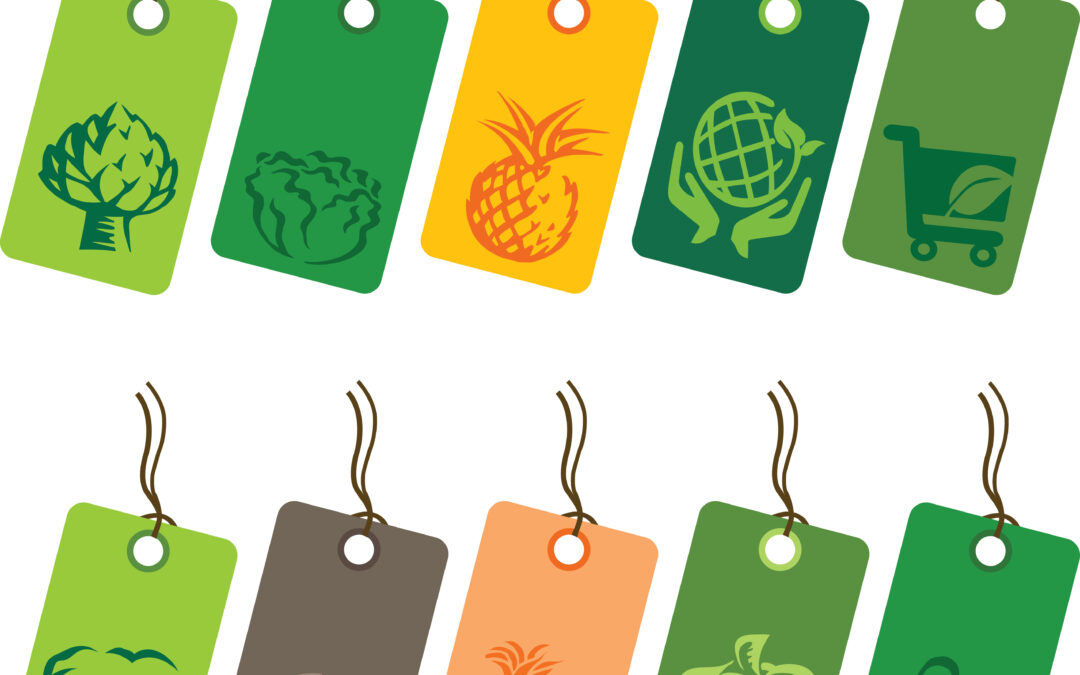In the middle of my integrative health training I had one of my biggest aha moments about stress. One way that your body tells you that you are living with too much stress is by making you more sensitive to foods you love.
I lived blissfully unaware of food sensitivities until that magic midlife moment when coffee and wine, my dear companions, started disagreeing with me. Now they are a reliable guide for excess irritation in my life. When I start to break out from drinking coffee I know it’s time to get more rest and do a bit of life de-cluttering. I get my fastest result by eliminating irritating foods and loading up on organics.
What is Organic, Exactly?
Coming from a background in marketing, the term organic used to make me think “easy way to extract more cash”. I had to educate myself on what organic really means. In Canada, food that has been labelled “organic” has been grown or raised without chemical fertilizers, pesticides, weed killers, or drugs. So farmers or ranchers use natural methods of pest control, like plant oils, soap, fungus-eating bacteria, or bugs that eat other bugs. Fertilizers must be natural and irradiation to kill pests, improve yield or prevent spoiling is a no-no. Ranchers don’t give their animals antibiotics or growth hormones and feed them only organic meal.
Don’t confuse organic with food labelled “natural,” “sustainable,” “hormone-free,” or “free-range”. The Canadian government does not regulate the use of those labels, so anyone can use them.
Shop Mindfully
The only problem with buying organic is the strangled gasp I emit at the check-out if I’ve been shopping mindlessly. I decided to check out different ways to eat as much organic, sustainable food as possible without threatening my own personal sustainability. Here’s a list of obvious and not-so-obvious tips:
1. Buy organic versions of only the foods you eat most often – on the principle that your habits are what make you
2. Buy organic varieties of the most pesticide laden traditionally grown produce. Hit list – peaches, apples, sweet bell peppers, celery, nectarines, strawberries, cherries, lettuce, imported grapes and pears.
3. Watch for in-season sales of fruits and veggies and stock up. Clean, prep, blanch and freeze them – broccoli, green beans, peppers, cabbage, cauliflower and mushrooms all do well.
4. Be creative with protein sources. Lentils, beans, eggs and tofu can all substitute for meat at a much lower cost per 100 grams.
5. Use canned fish instead of fillets. All tinned salmon is wild-caught and chunk light tuna is healthy in moderation. The World’s Healthiest Foodshas a concise post on which types of tuna you can still eat and not risk mercury toxicity.
6. Sign up for organic food baskets from small independent farms. You buy a share in a local organic farm and get delivery of local and sourced fruits, veggies, and other organic-certified goodies. Some producers set up a network of delivery spots in urban areas. You can find lots of great seasonal recipes on most sites – check out PlanB Organics as an example.
7. Find a local organic buying club. Ontario Natural Food Co-op (ONFC) will deliver natural and organic brands like Amy’s Kitchen and Eden Foods to self-organized buying clubs. The minimum is 5 adults, but a group works better with at least 10 families. ONFC can give you a list of buying clubs in your area to join.
8. Buy generic or house brand cereals, olive oils, frozen fruits and vegetables from your local organic food store. They are usually equal in quality to the national brands.
9. Buy healthy staples like dried beans, sunflower seed, brown rice and millet in bulk.
10. Grow a sprout or greens garden in a sunny spot for nutritious greens on demand.
Sources: HealthLink BC, Environmental Working Group, Best Health Magazine
Image licensed under iStockphoto
If you enjoyed this post, please share it with your friends!

